17 Best Places To Visit In China

- Overview
- 17 Best Places To Visit In China
- 1. The Forbidden City, Beijing
- 2. The Great Wall of China
- 3. Terracotta Army, Xi’an
- 4. Li River, Guilin
- 5. Shanghai Skyline, Shanghai
- 6. Zhangjiajie National Forest Park, Hunan
- 7. Potala Palace, Lhasa
- 8. Victoria Harbor, Hong Kong
- 9. Mount Huangshan, Anhui
- 10. Jiuzhaigou Valley, Sichuan
- 11. West Lake, Hangzhou
- 12. Yungang Grottoes, Datong
- 13. Suzhou
- 14. Lijiang
- 15. Chongqing
- 16. Sanya, Hainan
- 17. Kunming
- Tips for Travellers
- Conclusion
- FAQs
Overview
Hey, wanderlust friends!
Are you itching for an adventure that will fill your soul and Instagram feed with awe? Look no further because China, with its vast landscapes, ancient history, and bustling cities, is calling your name. From Guilin’s tranquil beauty to the Forbidden City’s imperial wonders, this country offers a journey through both time and terrain that is nothing short of magical.
I’ve explored vast amounts of information, savoured the tales of the finest tea, and immersed myself in stories of neon lights and serene gardens to curate this list for you: the 17 Best Places to Visit in China. Whether you’re a history buff, a nature lover, or an urban explorer, there’s a spot on this list with your name on it. And don’t worry about language barriers or cultural misunderstandings; this guide is crafted to be as easy to navigate as your hometown yet as exciting as your wildest dreams.
So, strap on your boots, pack your curiosity, and let’s embark on this incredible journey together. Trust me, by the end, you’ll have more than just memories; you’ll have stories to tell and experiences that will last a lifetime. Ready to explore?
Let’s dive in!
17 Best Places To Visit In China
Immerse yourself in the enchanting beauty of China and explore its 17 remarkable gems.
Let’s get started!
1. The Forbidden City, Beijing
The Forbidden City, nestled in the heart of Beijing, is a remarkable testament to China’s grand imperial history. As the largest ancient palatial structure in the world, it boasts over 800 buildings and about 9,000 rooms. Serving as the home for 24 Ming and Qing dynasty emperors from 1420 to 1912, it is a spectacular maze of courtyards, palaces, and gardens.
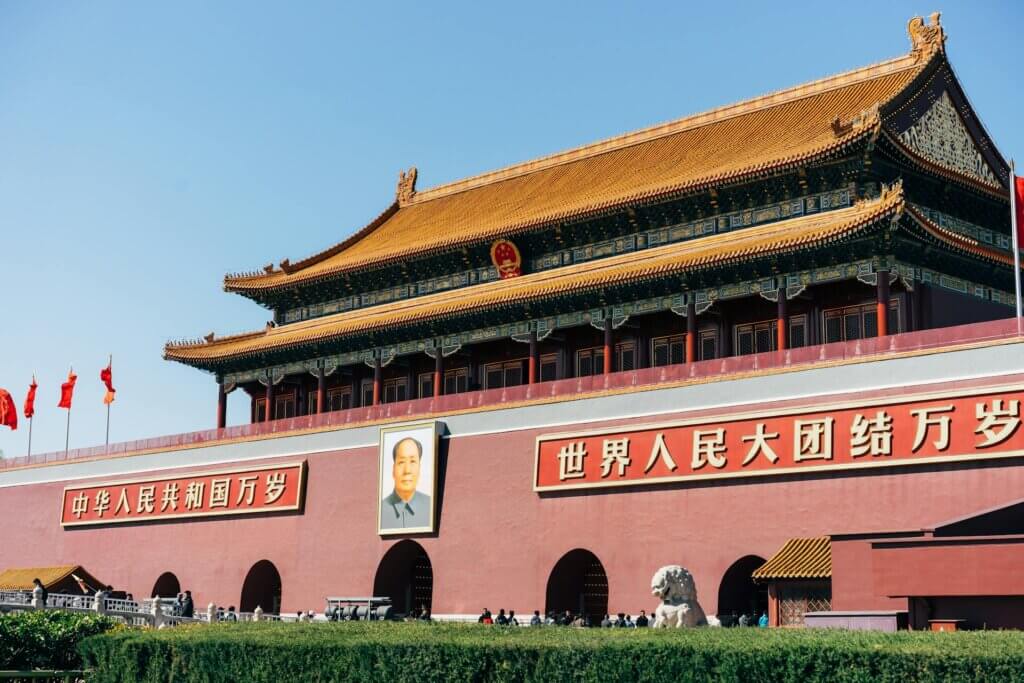
Inside, you’ll find a treasure trove of artefacts housed in the Palace Museum — including ceramics, paintings, and jade carvings. Immerse yourself in history as you explore this UNESCO World Heritage Site that once represented the ceremonial and political centre of the Chinese government.

Key Points
- Ideal for: History buffs, architecture lovers
- Best Time to Visit: Autumn (Sep-Nov)
- Best Clothing Items: Walking shoes, sun hat
- Popular Places to Eat: TRB Forbidden City, Capital M, Siji Minfu Restaurant, The Grandma’s
- Top Things to Do: Visit the Gate of Heavenly Peace, See Hall of Supreme Harmony, Explore Imperial Garden
- Things to Remember: Buy tickets ahead, Bring sunscreen, Restrictions on large bags, No photos in certain areas
How to Reach?
- Nearest Railway Station: The nearest railway station is Beijing Railway Station, located only around 4 km away. You can take a quick taxi ride or travel by bus (No. 9 or No. 673) directly to the Forbidden City.
- Nearest Airport: Beijing Capital International Airport is about 26 km away. Airport shuttle buses and taxis are available. You can also use the Beijing Airport Express Train to Dongzhimen Station, then transfer to Line 2 of the subway to Jianguomen Station, and change to Line 1 to Tiananmen East or West Station, which are close to the Forbidden City.
- Nearest Bus Station: There are several bus stops around the Forbidden City. Gugong (the Palace Museum) Station and Tiananmen Square Station are the closest stations. Numerous local buses, such as No. 1, 5, 52, and 728, service these stations. Check local bus schedules for the most convenient routes and timing.
2. The Great Wall of China
Witness an incredible feat of engineering and resilience that meanders through the fascinating landscape of China – The Great Wall. This legendary symbol of China’s ancient military defence is draped over the rugged terrain and steep mountain ridges, sculpting a dramatic panorama. Stretching over 13,000 miles, it’s not merely a wall but a collection of fortification systems demonstrating the genius and tenacity of human endeavour.
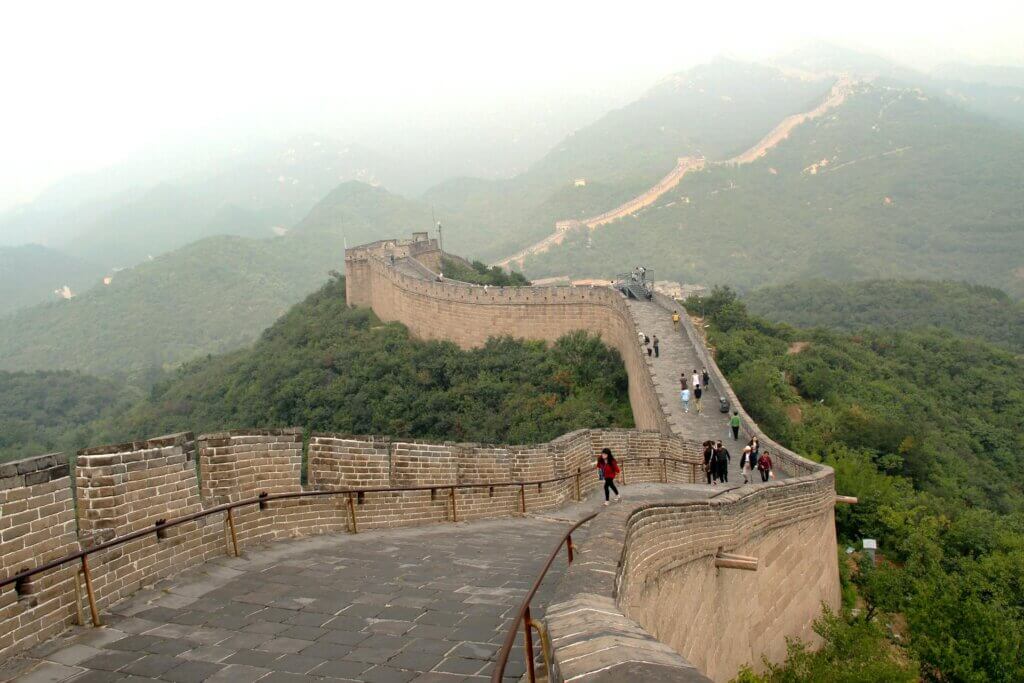
Whether you’re walking along a restored section adorned with watchtowers or trekking through a crumbling, overgrown passage, each step on the Great Wall is a step back in time, offering a profound journey rich in history, mystery, and breathtaking views.
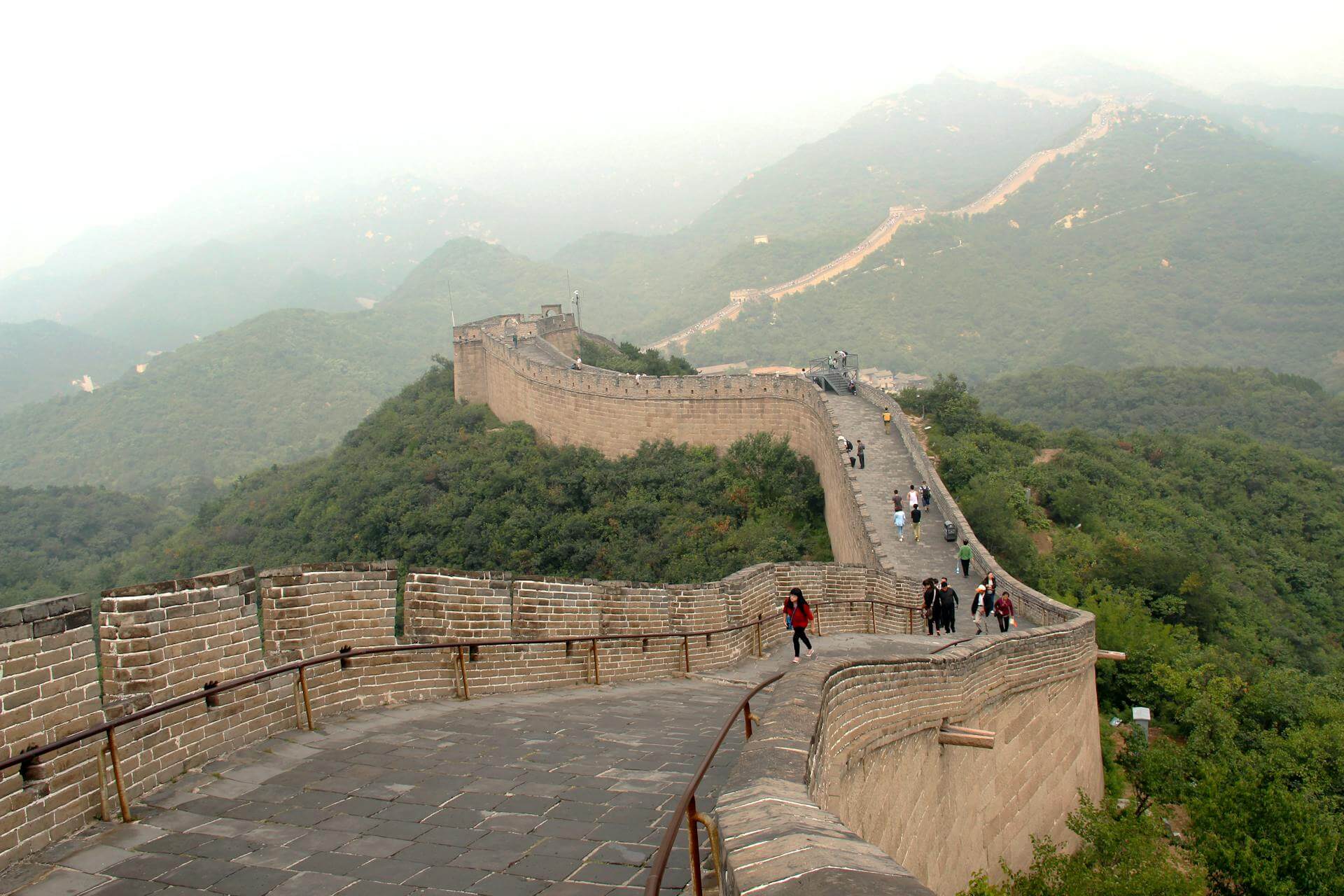
Key Points
- Ideal for: Adventurers, history lovers, hikers
- Best Time to Visit: Spring (April-May), Autumn (September-October)
- Best Clothing Items: Hiking boots, layers, windbreaker
- Popular Places to Eat: The Schoolhouse at Mutianyu Great Wall for international and Chinese dishes, Subway at Badaling for a quick bite
- Top Things to Do: Hike from Jiankou to Mutianyu for wild scenery. Catch sunrise or sunset at Jinshanling and Ride the cable car at Badaling for stunning views
- Things to Remember: Carry water and snacks, Respect the wall and surroundings – no graffiti, Check weather conditions before your visit, Start early to avoid crowds
How to Reach?
- Nearest Railway Station: To visit the Badaling section, the most popular part of the Great Wall, Beijing North Railway Station is the nearest, offering direct trains to Badaling Station.
- Nearest Airport: Beijing Capital International Airport is the closest. You can take the Airport Express to Dongzhimen, then change to Line 2 to reach Beijing North Railway Station for your onward journey to Badaling.
- Nearest Bus Station: For the Mutianyu section, another well-preserved part of the Wall, Dongzhimen Transport Hub, is Beijing’s nearest bus station. Take bus line 916 express or 916 to Huairou North Avenue, then transfer to bus line h23, h24, h35, or h36 to Mutianyu Roundabout. Then, take a short walk to the destination. Remember to plan your trip to make the most of your time at the Great Wall!
3. Terracotta Army, Xi’an
Behold one of the world’s greatest archaeological treasures – the Terracotta Army in Xi’an. Hidden beneath the earth’s crust for over 2,000 years, this mass of clay warriors, chariots, and horses forms an astonishing testament to the ambition of China’s first Emperor, Qin Shi Huang. Each of the thousands of life-sized figures exhibits unique facial features, expressions, and postures.
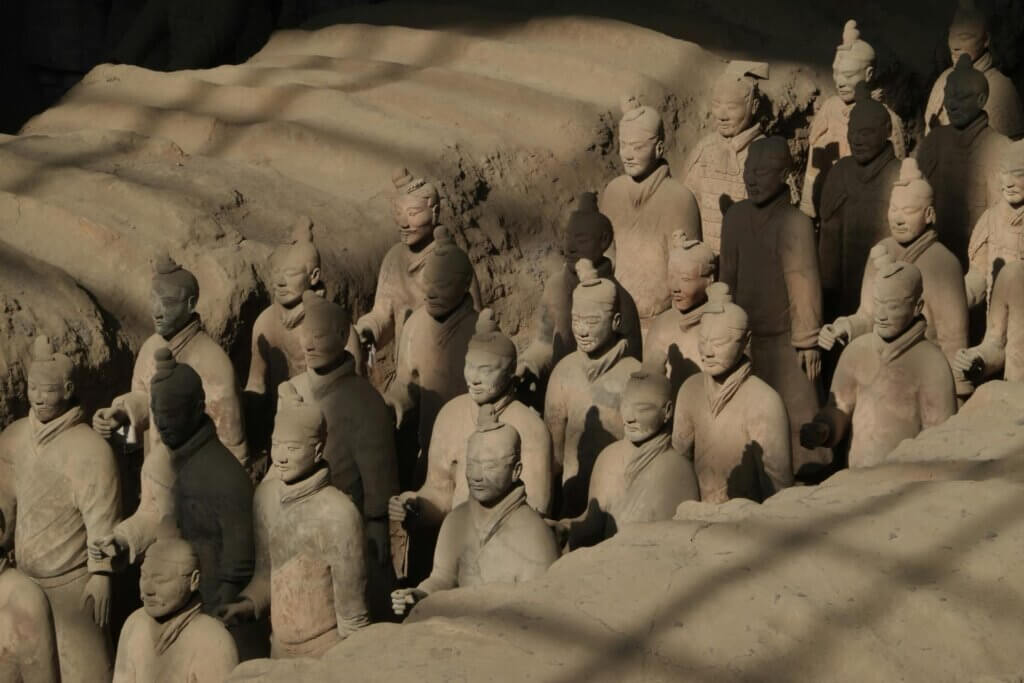
It feels like the stone-cold gaze of the Terracotta Army transports you to the very dawn of China’s mighty civilization. It’s not just a giant pit of clay statues but a silent yet powerful representation of past glory, making any visitor feel an immersive surge of wonder and fascination.

Key Points
- Ideal for: History enthusiasts, art lovers, photographers
- Best Time to Visit: Spring (March-May), Autumn (September-November)
- Best Clothing Items: Comfortable shoes, light clothing with a jacket, hat
- Popular Places to Eat: The Museum Restaurant for local dishes, Yaodamen Restaurant for noodles and dumplings
- Top Things to Do: Visit each of the three pits, Explore the Exhibition Hall of Historical Relics and Observe the Bronze Chariot Hall
- Things to Remember: Usually crowded, so start early, No flash photography, Comfortable footwear for a lot of walking and English-speaking guides available for hire
How to Reach?
- Nearest Railway Station: Xi’an Railway Station is the nearest. From there, you can take bus no. 5 (306), which goes directly to the Terracotta Warriors Museum.
- Nearest Airport: The closest airport is Xi’an Xianyang International Airport, about 70 km away. Airport shuttle, taxi, or private car services can transport you to the city centre, where you can then take bus no. 5 (306) to the museum.
- Nearest Bus Station: Xi’an Railway Bus Station is located on the east side of the Station. Direct buses no. 5 (306) and no. 914 serve the Terracotta Army. The ride takes about one hour, so sit back and enjoy the urban vistas on your way to an incredible journey back in time!
4. Li River, Guilin
Indulge in the sublime charm of Li River in Guilin – a picturesque tapestry of crystal-clear waters meandering through dramatic karst mountains, verdant bamboo groves, serene villages, and serene rice terraces. As you sail along its tranquil waters, you’ll find it a painter’s palette of wonder, a poem in a visual form. Its ethereal beauty has inspired countless generations of poets and artists and will ignite your imagination, too.
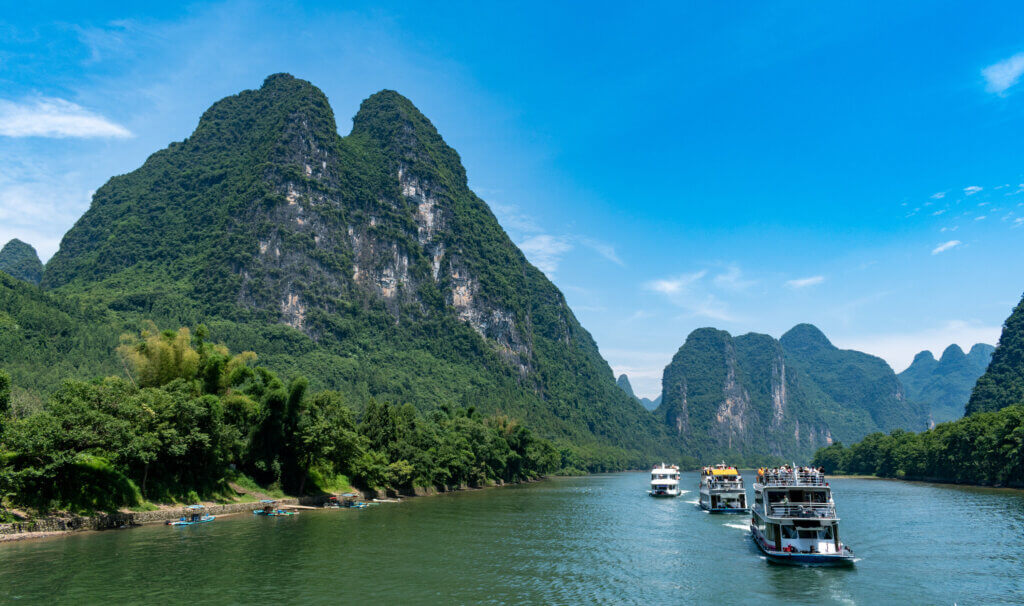
Whether capturing incredibly photogenic reflections in your lens or simply letting the serene ambience sink into your soul, the Li River is a mesmerizing blend of tranquillity and inspiration that promises an unforgettable experience.

Key Points
- Ideal for: Nature enthusiasts, photographers, romantic couples
- Best Time to Visit: Spring (April-June), Early Autumn (September-October)
- Best Clothing Items: Comfortable shoes, light rain jacket, hat
- Popular Places to Eat:
Yangshuo Beer Fish Restaurant for signature fish dish, Yiyuan Sichuan Restaurant for spicy cuisine - Top Things to Do: Enjoy a river cruise, Pay a visit to Reed Flute Cave, Explore the ancient town of Xingping
- Things to Remember: Sunrise and sunset offer breathtaking views, Weather can be unpredictable, so check in advance, Respect the natural surroundings, Local guides available for hire
How to Reach?
- Nearest Railway Station: Guilin North Railway Station is the closest. From there, arranging transportation by taxi, public bus, or private car services to the river banks is easy.
- Nearest Airport: Guilin Liangjiang International Airport is the closest airport. It offers airport shuttle services to downtown Guilin; from there, you can take a taxi or bus to the Li River.
- Nearest Bus Station: Guilin Bus Station connects the city with many local long-distance destinations. Many buses operate from here to Yangshuo, where you can start your Li River cruise. Alternatively, you can take a bus or taxi to the Bamboo River Wharf (Mopanshan), about 28 km south of Guilin, to begin your Li River adventure.
5. Shanghai Skyline, Shanghai
Shanghai, a buzzing metropolis that’s a vivid embodiment of modern China, boasts one of the most iconic skylines in the world. A trip to Shanghai is only complete with marvelling at its futuristic horizon, especially the jaw-dropping vista from The Bund, where historical architecture meets the city’s contemporary spirit across the Huangpu River. By day, the Shanghai Skyline impresses with its architectural feats.

At the same time, by night, it transforms into a dazzling spectacle of lights and colour. From the soaring heights of Shanghai Tower to the bottle opener-like silhouette of the World Financial Center, this skyline is a testament to human ingenuity and ambition. It’s not just a view; it’s an experience that encapsulates the energy and dynamism of Shanghai.
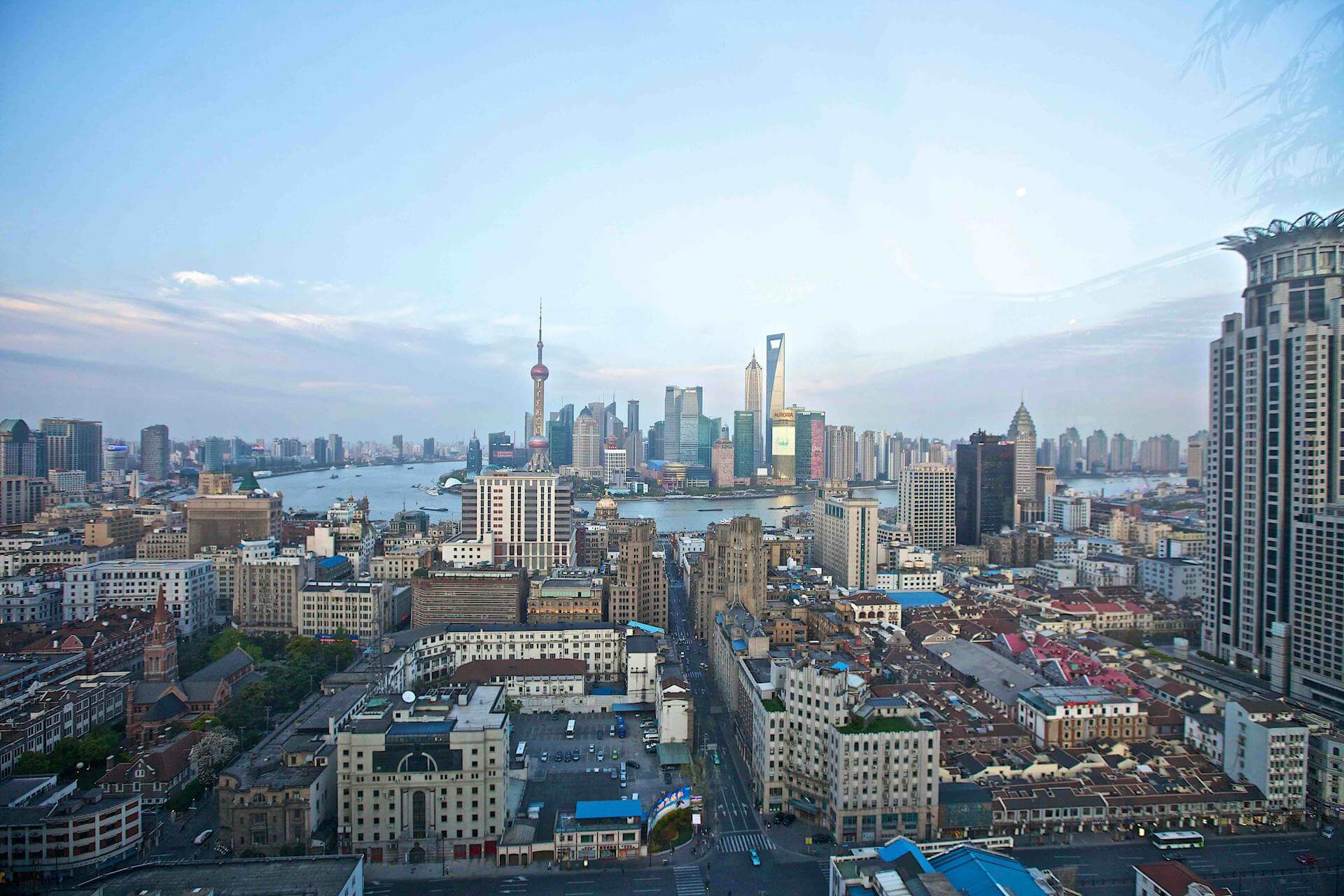
Key Points
- Ideal for: Urban explorers, photographers, couples
- Best Time to Visit: Autumn (September-November), Spring (March-April)
- Best Clothing Items: Comfortable walking shoes, casual chic attire for dining out, light jacket for evenings
- Popular Places to Eat: Vue Bar for drinks with a view, M on the Bund for upscale dining
- Top Things to Do: Stroll along The Bund, Visit the observation deck of Shanghai Tower, Take a Huangpu River cruise at night
- Things to Remember: Crowds gather at sunset for photos : arrive early, Check weather forecasts: smog can obscure views, Night views of the skyline are spectacular: plan for evening visits
How to Reach?
- Nearest Railway Station: Shanghai Hongqiao Railway Station provides easy access to various parts of the city via metro or taxi. You can hop on the metro to reach the city centre and The Bund area.
- Nearest Airport: Shanghai Pudong International Airport is the gateway for international travellers. You can take the Maglev train, the fastest commercial high-speed electric train in the world, to Longyang Road metro station and switch to the metro system to reach downtown Shanghai.
- Nearest Bus Station: Several major bus stations service Shanghai, but the East Nanjing Road bus station offers numerous routes for those aiming for the skyline sights. Here, you’re a short walk from The Bund, overlooking the majestic Shanghai Skyline.
6. Zhangjiajie National Forest Park, Hunan
The fantasy-like Zhangjiajie National Forest Park in Hunan province is where nature takes over the reins of your imagination. Setting your eyes on the strangely beautiful rock formations jutting towards the sky, you’ll feel like you’ve stepped into the landscape of an epic movie. It’s no wonder that the unique stone spires inspired the floating mountains in James Cameron’s ‘Avatar.’

With its stunning vistas, lush forests, ethereal fog, and clear streams, this magical park is nothing short of a paradise for nature lovers. It’s here where ruggedness meets serenity, mystique intertwines with beauty, and every step forward unravels a new, captivating sight.

Key Points
- Ideal for: Adventure enthusiasts, nature lovers, photographers
- Best Time to Visit: April-May (Spring), September-October (Autumn)
- Best Clothing Items: Hiking shoes, rainwear, layers for varying weather
- Popular Places to Eat: Zhangjiajie Dining Hall for traditional dishes, Tu Minority restaurant for local minority cuisine
- Top Things to Do: Explore the Avatar Hallelujah Mountains, Visit the Golden Whip Stream, Ride the Bailong Elevator
- Things to Remember: Weather can vary significantly within a day, Protective measures required for rain and sun, Adequate hydration and snacks for the hike, Engage a local guide for the best experience
How to Reach?
- Nearest Railway Station: Zhangjiajie Railway Station is the nearest. From there, you can take a direct bus or an inexpensive taxi to the park’s entrance.
- Nearest Airport: The most convenient airport is Zhangjiajie Hehua International Airport. It’s located in the centre of Zhangjiajie City. Hop into a taxi or bus that takes you to your otherworldly adventure in Forest Park.
- Nearest Bus Station: Zhangjiajie Central Bus Station offers numerous buses to the entrance gate of Zhangjiajie National Forest Park. Sit back and lose yourself in the charm of the quaint city as you drive towards the majestic embrace of nature.
7. Potala Palace, Lhasa
Majestically standing at an altitude of 3,700 meters, the Potala Palace in Lhasa is the epitome of grandeur and spirituality. This iconic edifice, formerly the winter residence of the Dalai Lama, is a true marvel of Tibetan architecture.
It dramatically crowns the city of Lhasa with its white and red grandeur, offering an unforgettable sight. Over a thousand rooms spread across the White and Red Palaces, Potala houses a fantastic collection of Buddhist art, murals, scriptures, and precious artefacts.

As you ascend the stairways of this incredible UNESCO World Heritage Site, you’re not merely exploring a historical monument but stepping into a tapestry of Tibetan history and culture that unfurls with each room you discover.

Key Points
- Ideal for: History buffs, spiritual seekers, photographers
- Best Time to Visit: May-June (spring), September-October (autumn)
- Best Clothing Items: Comfortable walking shoes, layers for changing temperatures, sun hat, sunglasses
- Popular Places to Eat: Snowland Restaurant for Tibetan cuisine, Dunya Restaurant for varied international options
- Top Things to Do: Explore the Red and White Palaces, Visit the many shrines and chapels inside, Discover the ancient artefacts and murals
- Things to Remember: Limited entry tickets per day; book in advance, High altitude can cause discomfort – stay hydrated, Respect local customs and traditions
How to Reach?
- Nearest Railway Station: Lhasa Railway Station is your gateway. It’s a modern, efficient station with taxis and buses ready to whisk you away to the Potala Palace.
- Nearest Airport: Lhasa Gonggar Airport, situated about 65 km south of Lhasa, is the closest airport. Shuttle buses ply between the airport and the city centre. From there, you can quickly grab a taxi or board a local bus to Potala Palace.
- Nearest Bus Station: Located near the Potala Palace, the Lhasa West Suburb Coach Station is well-connected with various parts of the city and surrounding regions. Public buses and taxis are available from here to reach the palace.
8. Victoria Harbor, Hong Kong
Victoria Harbor, the glittering jewel in Hong Kong’s dazzling crown, is the bustling epicentre where the East meets the West. With its broad sweep of waters amidst the hustle of Asia’s world city, this legendary harbour offers a kaleidoscope of neon and LED lights come nightfall.
Victoria Harbor isn’t just any body of water; it’s a living showcase of towering skyscrapers, ferries shuttling across, and cultural exchanges. The Symphony of Lights, a stunning multimedia show set against the harbour backdrop, punctuates the night sky each evening with choreography of lasers and spotlight dances.

Here, travellers and locals converge, embodying the true spirit of Hong Kong’s vibrant atmosphere. Entwined in history and modernity, Victoria Harbor invites you to witness the skyline that has become a global icon.
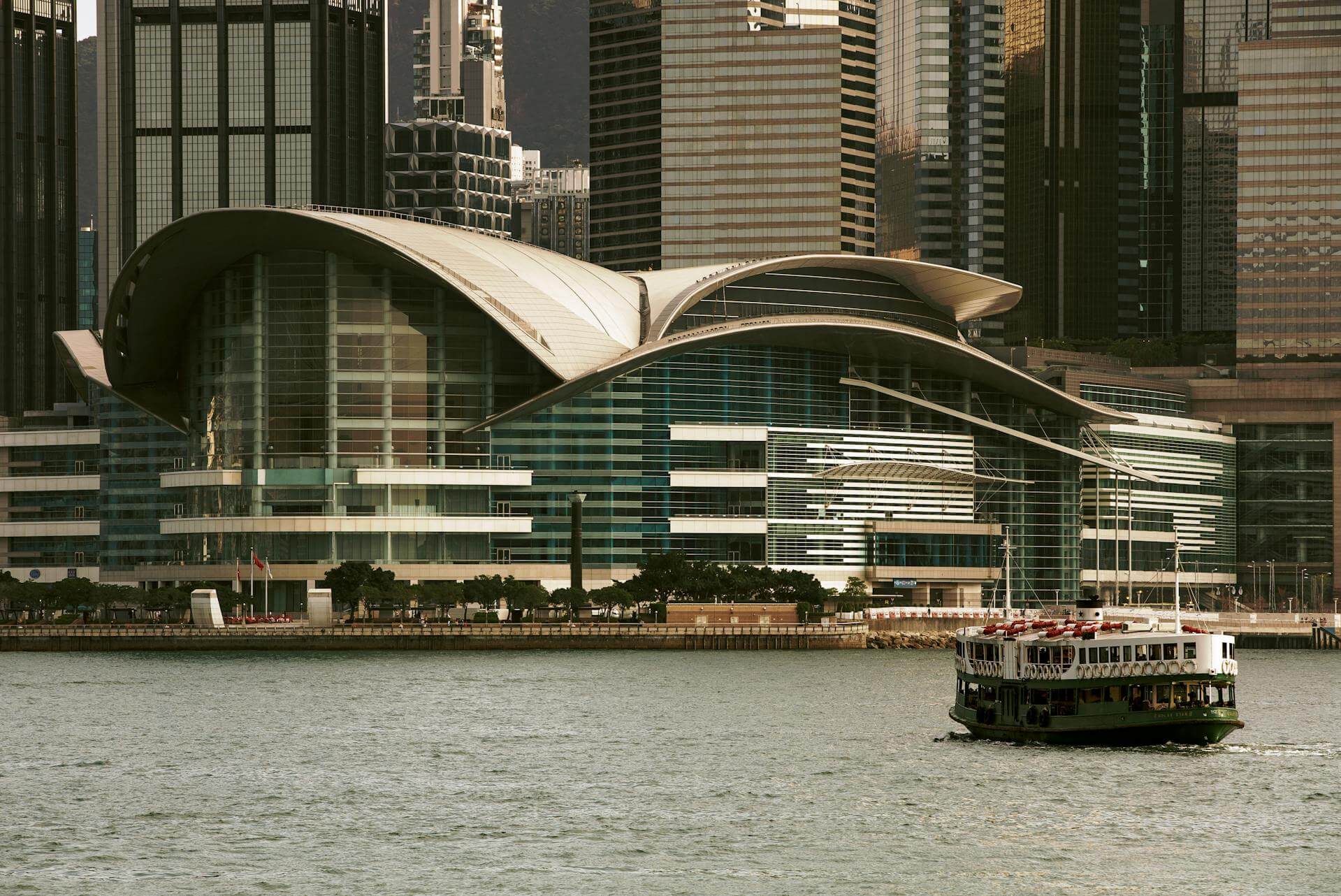
Key Points
- Ideal for: City explorers, night photography enthusiasts, couples
- Best Time to Visit: October-December (clear skies), February-April (cool temperatures)
- Best Clothing Items: Comfortable walking shoes, light layers, chic urban wear for evening dining and entertainment
- Popular Places to Eat: Hutong for panoramic views and Northern Chinese cuisine, Aqua for Italian-Japanese fusion dining with harbour views
- Top Things to Do: Enjoy the Symphony of Lights show, Take the Star Ferry between Kowloon and Hong Kong Island, Visit the Sky100 Hong Kong Observation Deck
- Things to Remember:
Sunset and nighttime offer spectacular views: plan accordingly, Check ferry and cruise schedules in advance, Pack a camera for breathtaking skyline shots
How to Reach?
- Nearest Railway Station: The MTR’s East Tsim Sha Tsui Station is a short stroll from the harbour, ideally connecting you with the rest of Hong Kong.
- Nearest Airport: Hong Kong International Airport is the nearest airport. From there, you can catch the Airport Express to Tsing Yi Station and transfer to the Tung Chung Line to Kowloon Station, which is close to the harbour.
- Nearest Bus Station: The Star Ferry Bus Terminal in Tsim Sha Tsui offers a broad network of routes that can take you directly to the sights and delights of Victoria Harbor.
9. Mount Huangshan, Anhui
If you’re looking for a landscape that marries grandeur, mystery, and beauty, look no further than Mount Huangshan in Anhui province. This splendid mountain range, with its 72 peaks, is the embodiment of traditional Chinese paintings come to life. The most commonly captured scenes of Mount Huangshan include its serpentine granite peaks, often adorned by twisted pines, all under the spell of a heavenly and ever-changing mist.
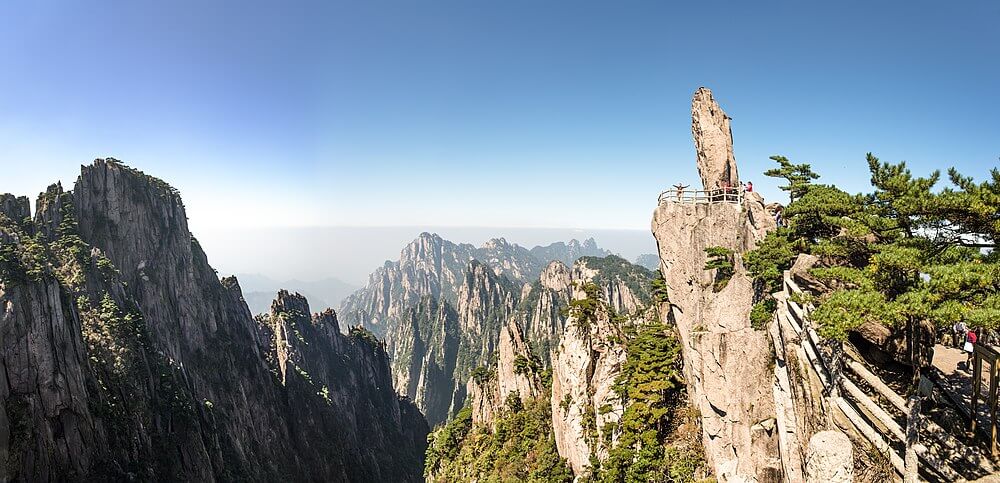
Mount Huangshan’s seductive beauty is heightened when snow drapes the mountains during winter or when the first light of dawn paints the sky in hues of stunning warmth. It’s more than a mountain range; it’s an ethereal world that has inspired poets, painters, and pilgrims for centuries.

Key Points
- Ideal for: Nature enthusiasts, hikers, photographers
- Best Time to Visit: April-May for spring blooms, September-November for clear views and autumn foliage
- Best Clothing Items: Sturdy hiking boots, Breathable layers, Waterproof jacket
- Popular Places to Eat: Laojie Diyi Lou for traditional Anhui cuisine, Baiyun Hotel restaurant for local flavours with mountain views
- Top Things to Do: Sunrise at Refreshing Terrace (Qingliang Tai), Explore the Begin-to-Believe Peak, Walk the Cloud Dispelling Pavilion, Visit the legendary Guest-Greeting Pine
- Things to Remember: Weather can change rapidly: pack accordingly, Physical fitness required for strenuous hikes, Stay on marked trails for safety, Purchase tickets and accommodations in advance during peak seasons
How to Reach?
- Nearest Railway Station: Huangshan North Railway Station offers high-speed train services and connects you to major cities across China. Regular buses and taxis ply from the station to the mountain area.
- Nearest Airport: Huangshan Tunxi International Airport lies just 71 km away. From the airport, you can find buses that drive directly to the Mount Huangshan Scenic Area.
- Nearest Bus Station: The Huangshan Tourist Transport Center (locally referred to as Tangkou Bus Station) is the central hub where you can catch a direct bus to the scenic area. The centre is well-connected with both urban and rural regions of Huangshan City.
10. Jiuzhaigou Valley, Sichuan
Jiuzhaigou Valley, a UNESCO World Heritage Site in the heart of Sichuan, China, is a canvas of nature’s most vibrant colours and dramatic landscapes. This enchanting valley, which translates to “Nine Village Valley,” extends over 72,000 hectares and is celebrated for its multi-level waterfalls, colourful lakes, and snow-capped peaks.
The crystal-clear waters, ranging from turquoise to emerald, create a magical spectacle, reflecting the sky and the surrounding foliage. Jiuzhaigou changes its wardrobe with the seasons, offering a different kind of beauty at every turn, from the lush greens of summer to the golden hues of autumn, making it a mesmerizing escape throughout the year.

It’s a place where you can walk through dense woods, catch the reflection of the mountains in the serene lakes, and immerse yourself in the serenity and mystique that envelop the valley.

Key Points
- Ideal for: Nature lovers, photographers, eco-tourists
- Best Time to Visit: September-November (autumn colors), April-June (waterfalls)
- Best Clothing Items: Comfortable walking shoes, Layers for changing temperatures, Rain jacket/umbrella
- Popular Places to Eat: Explore the local Tibetan and Qiang minzu restaurants for their yak meat dishes and barley wine.
- Top Things to Do: Enjoy the Five Flower Lake, Visit the Nuorilang Waterfalls, Explore the Shuzheng and Zechawa Valleys, Hike to Long Lake
- Things to Remember:
* Altitude sickness can be an issue; acclimatize and stay hydrated
* The park has an electric bus system; make use of it as the park area is extensive
* Respect the nature, do not litter or venture off the approved paths
* Save the map of the park provided at entrance for navigation
How to Reach?
- Nearest Railway Station: The nearest central railway station is the Chengdu Railway Station. From Chengdu, travellers can take a bus or a private car service to reach Jiuzhaigou. However, it involves a lengthy but scenic drive.
- Nearest Airport: Jiuzhai Huanglong Airport is the closest, about 88 km from Jiuzhaigou Valley. The airport is well-serviced by flights from major Chinese cities. Upon landing, visitors can catch a shuttle bus or taxi directly to the valley.
- Nearest Bus Station: The Jiuzhaigou Bus Station is the main gateway for travellers heading to the valley. Buses arrive here from Chengdu, Mianyang, and other Sichuan cities, making it accessible from virtually anywhere in Sichuan.
11. West Lake, Hangzhou
Serenity ripples across the surface of West Lake in Hangzhou, a splendid and historic freshwater lake that has been the muse of poets, artists, and emperors across millennia. This idyllic paradise, bordered by lush gardens, serene temples, and ancient pagodas, is the centrepiece of a landscape that appears to be masterfully painted by the deftest of hands.
Its beauty has been preserved and celebrated, encapsulated in the Chinese saying: “Above there is heaven, below there are Hangzhou and Suzhou.” The West Lake is a harmonious blend of natural wonder and cultural significance, striking the perfect balance between stunning natural scenery and human creativity.
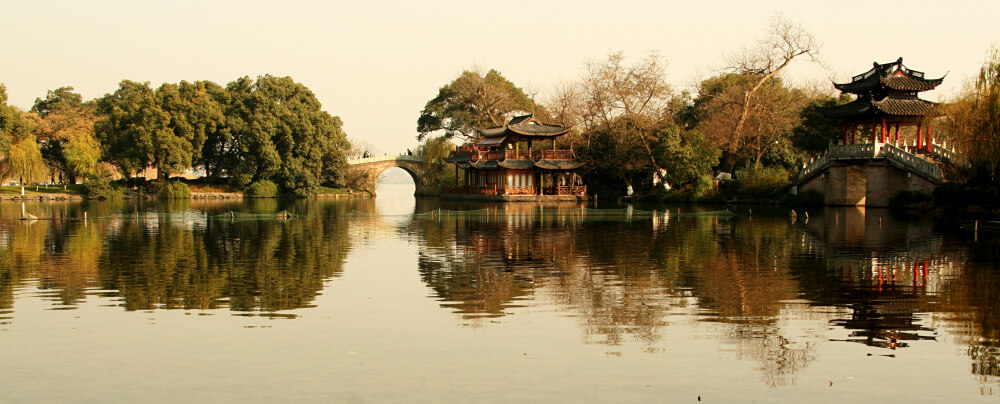
Whether you’re seeking the tranquillity of a solitary walk along the Su Causeway, a gentle boat ride across the water, or the romance of the evening music and light show at the Yue Fei Temple, West Lake offers a slice of zen that needs to be savoured.

Key Points
- Ideal for: Nature lovers, history enthusiasts, couples, photographers
- Best Time to Visit: March-May (spring blooms, mild weather), September-November (autumnal colors, less crowd)
- Best Clothing Items: Comfortable walking shoes, Season-appropriate clothing; layers in colder months
- Popular Places to Eat: Lou Wai Lou for local cuisine and lake views, Grandma’s home for a modern take on Hangzhou dishes
- Top Things to Do: Boat ride on the West Lake, Stroll around the Su Causeway, Visit the Leifeng Pagoda, Explore the Lingyin Temple
- Things to Remember: Purchase tickets for attractions in advance, Plan your itinerary according to different sections of the lake, Respect the environment and cultural sites, Remember to try the famous Longjing tea
How to Reach?
- Nearest Railway Station: Hangzhou Railway Station, also known as the City Station, is conveniently close to West Lake, merely 3 kilometres away. It has excellent public transport links to the lake.
- Nearest Airport: Hangzhou Xiaoshan International Airport is the region’s gateway, situated around 30 km from West Lake. Upon arrival, one can take a taxi directly to the lake or use the airport shuttle bus to get closer to the city centre.
- Nearest Bus Station: The Hangzhou West Bus Station offers extensive bus services that can drop you a short walk away from the lake. The public transport within Hangzhou is efficient, with several bus lines stopping directly at the various scenic spots on West Lake.
12. Yungang Grottoes, Datong
Carved into the golden sandstone cliffs of Wuzhou Mountain, the Yungang Grottoes stand as a testament to the zenith of Buddhist art in ancient China. This awe-inspiring complex near Datong is home to more than 51,000 Buddha statues and carvings dating back to the 5th and 6th centuries.
As you stroll through the shadows of these ancient caves, you’re walking the same paths that monks once tread in silent contemplation over 1500 years ago. The grottoes, with their intricate details and colossal Buddhas, reflect a melting pot of Greek, Persian, and Indian influences, showcasing the far-reaching Silk Road connections of the time.
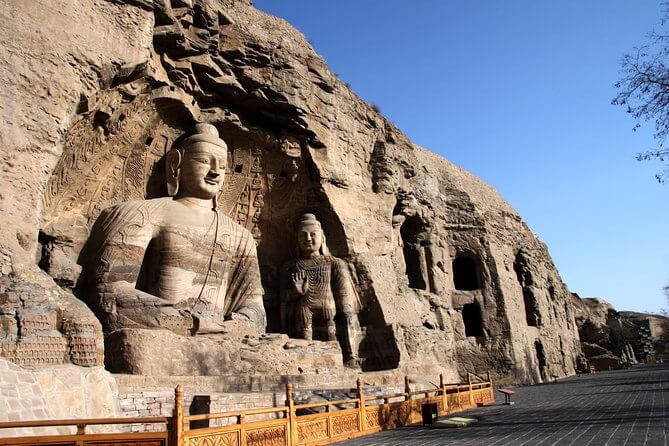
Every cave and surface tells a story, with delicate frescoes and sculptures that capture divine expressions that have withstood the test of time. The Yungang Grottoes are not just a series of statues but a sacred gallery, where each piece guides you through the journey of Buddhist art and culture that has dazzled pilgrims, historians, and travellers alike.2

Key Points
- Ideal for: History buffs, art enthusiasts, spiritual seekers, culture vultures
- Best Time to Visit: April-May (spring), September-October (autumn)
- Best Clothing Items: Comfortable shoes (for walking), Light layers (spring/autumn), Sun hat and sunscreen (summer), Warm clothing (winter)
- Popular Places to Eat:
Local eateries in Datong for traditional Shanxi cuisine, Noodle houses for a taste of the famous Datong yaomian - Top Things to Do: Explore the various caves and admire the ancient Buddhist sculptures, Visit the largest statue in Cave 5, Walk around the external temple complex, Capture the fascinating details of the carvings and murals
- Things to Remember: Bring your ID/passport (needed for entrance ticket purchase), Photography may be restricted in some areas; respect the signs, Start early to avoid crowds and have enough time to see everything, Wear modest clothing out of respect for the religious site
How to Reach?
- Nearest Railway Station: Datong Railway Station is the closest one, located about 16 km away from the Yungang Grottoes. Visitors can catch a bus or taxi directly to the site.
- Nearest Airport: Datong Yungang Airport is the closest air link, 17 km from the city centre. From the airport, tourists can use taxi services or public transportation to get to the grottoes.
- Nearest Bus Station: The Datong Tourist Bus Station has several buses running to the Yungang Grottoes. The public transport network within Datong is quite convenient for reaching the site.
13. Suzhou
Nestled in the eastern part of China, Suzhou is a city where the whispers of ancient times mingle seamlessly with the pulse of modern life. Often hailed as the “Venice of the East,” its enchanting water towns, elegant classical gardens, and intricate canals set a scene that feels borrowed from a delicate Chinese painting. Suzhou is not just about scenic beauty; it’s a cultural treasure trove boasting UNESCO World Heritage sites like the Humble Administrator’s Garden and the Lingering Garden.
With its 2,500 years of history, this city offers a tranquil retreat from the bustle of nearby metropolises, inviting visitors to meander through cobbled lanes, across arched stone bridges, and into the serene world of its teahouses and silk workshops.
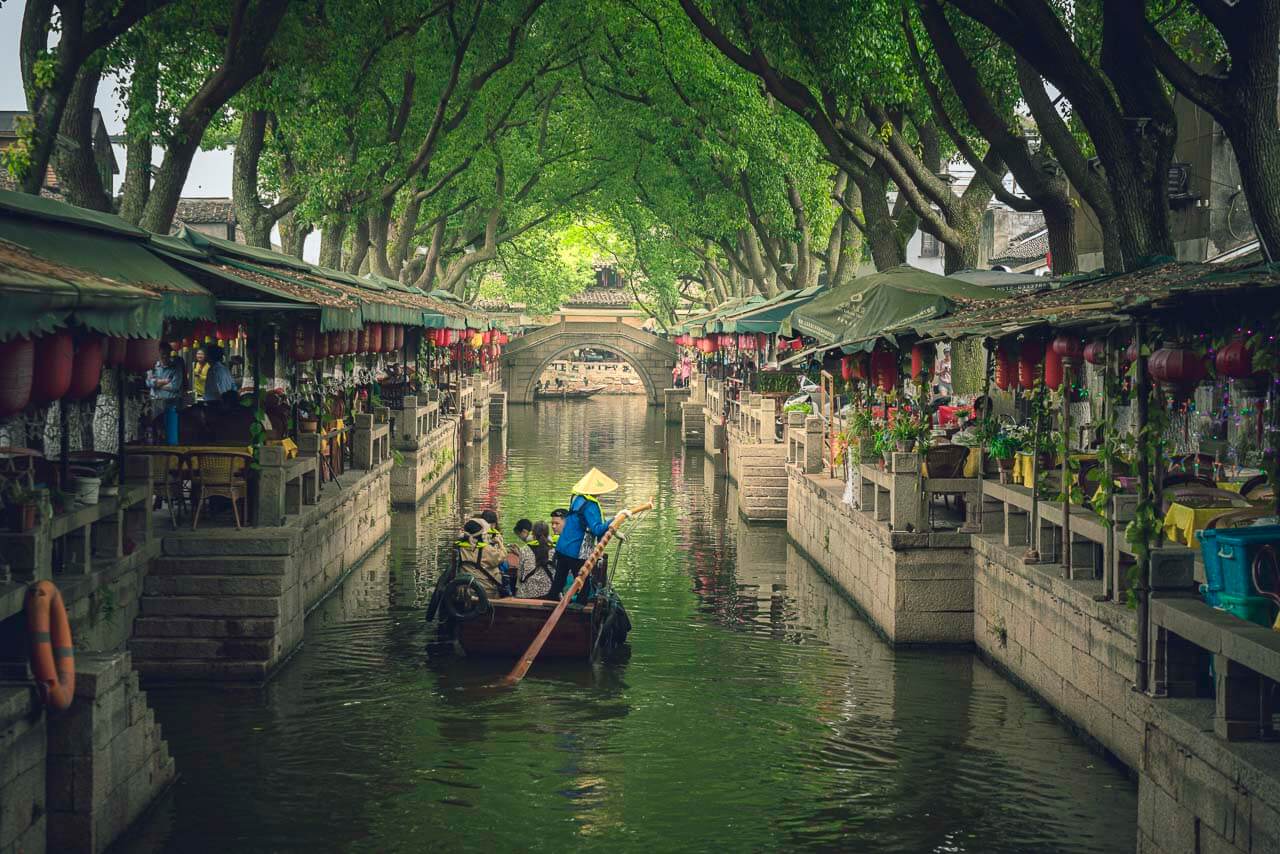
Whether you’re a history fan, a natural beauty lover, or someone seeking to understand the depth of Chinese culture, Suzhou will captivate your heart with its elegance and timeless charm.

Key Points
- Ideal for: Culture enthusiasts, photographers, lovers of nature and history
- Best Time to Visit: Late March to May (spring), September to November (autumn)
- Best Clothing Items: Light, breathable clothing (summer), Comfortable shoes (for garden and city walks), Umbrella or raincoat (June to July for rain), Warm layers (winter)
- Popular Places to Eat: Song He Lou (for authentic Suzhou cuisine), Yangyang Dumplings (for a local breakfast), De Yue Lou (one of the oldest restaurants in Suzhou)
- Top Things to Do: Visit the Classical Gardens of Suzhou, Explore Pingjiang Road, Boat ride in Zhouzhuang or Tongli water towns, See the Suzhou Museum and its exhibits on Chinese art, Walk along the ancient city wall
- Things to Remember: Respect the tranquillity of gardens and temples, Plan garden visits early or late to avoid crowds, Carry cash for smaller shops and ticket booths, Use public transport or rental bikes to explore the city efficiently
How to Reach?
- Nearest Railway Station: Suzhou Railway Station is the main gateway for city travellers. It’s well-connected to major cities like Shanghai, Beijing, and Nanjing, with high-speed rail options offering convenience and speed.
- Nearest Airport: The closest major airport is Shanghai Hongqiao International Airport, approximately 86 km from Suzhou. From the airport, take a short train ride or a direct bus to Suzhou, which provides a smooth transition from the air to the city’s enchanting waterways.
- Nearest Bus Station: Suzhou North Bus Station is a significant hub offering extensive routes covering the city and its scenic outskirts. Buses from here can take you directly to many historical sites and gardens for which Suzhou is famed.
14. Lijiang
Imagine a city where the clock seems to have stopped ticking, giving way to a charm reminiscent of a different era.
Welcome to Lijiang!
Located in China’s southwestern province of Yunnan, it is a city of stunning natural beauty, colourful ethnic cultures, and cobblestone streets that wind through its well-preserved Old Town, a UNESCO World Heritage Site. Here, traditional Naxi architecture flanks narrow lanes, water streams trickle past old stone bridges, and the dynamic music of the Naxi ethnic group fills the air.

With the majestic Jade Dragon Snow Mountain as a backdrop, Lijiang’s idyllic scenery and vibrant local culture create a captivating fusion of tradition and natural splendour. Whether you’re hiking the ancient Tea Horse Road, exploring the winding lanes of Old Town, or just sipping a cup of local Pu’er tea at a teahouse, Lijiang is a place that invites you to slow down and savour the serenity of a bygone era.

Key Points
- Ideal for: Culture enthusiasts, nature lovers, adventure seekers, and photographers.
- Best Time to Visit: Spring (March to May) for blooming flowers and pleasant weather, Autumn (September to November) for clear skies and comfortable temperatures.
- Best Clothing Items: Comfortable walking shoes for exploring the old town, Layers- as temperatures can vary significantly from day to night, Rain gear if visiting during the wet season (July and August).
- Popular Places to Eat: N’s Kitchen for global and local flavours, V Sherry Restaurant (味香雪里) for authentic Yunnan cuisine, Bamu Cafe for coffee and traditional Naxi snacks.
- Top Things to Do: Wander through the ancient streets of Lijiang Old Town, Hike in the picturesque Tiger Leaping Gorge, Visit the tranquil Black Dragon Pool Park, Explore the majestic Jade Dragon Snow Mountain, Enjoy the vibrant nightlife at Square Street (Sifangjie).
- Things to Remember: Respect local customs and traditions, especially those of the Naxi people., Be prepared for altitude changes, as Lijiang is at high elevation, Carry cash, as some smaller vendors may not accept credit cards.
How to Reach?
- Nearest Railway Station: Lijiang Railway Station, located about 10km from the Old Town, is well-connected with popular tourist cities like Kunming and Dali. With a good mix of speed and affordability, the train journey offers a unique and scenic approach to the city.
- Nearest Airport: The Lijiang Sanyi Airport, 28km south of the city, provides regular flights to major Chinese cities, including Beijing, Shanghai, and Kunming. Airport shuttles and taxis are readily available to help you reach your destination smoothly.
- Nearest Bus Station: Lijiang Express Bus Station is the central hub for local and intercity travel, facilitating easy and affordable transport across and beyond the city.
15. Chongqing
Welcome to Chongqing, a megacity that charmingly combines the buzz of urban life with the serenity of natural landscapes. Perched at the confluence of the Yangtze and Jialing rivers in Southwest China, Chongqing serves as a beacon of cultural heritage nestled amidst mist-covered mountains.
This city is a veritable feast for the senses. It is famed for its spicy hotpot, vibrant nightlife, and a sprawling urban skyline that lights up like a galaxy at night. Beyond its culinary delights and neon glow, Chongqing’s historical gems, such as the ancient town of Ciqikou and the mesmerizing Dazu Rock Carvings, offer a deep dive into China’s rich past.

The city’s unique topography of mountains and rivers not only shapes its distinctive landscapes but also contributes to the atmospheric fog that often shrouds the city, earning it the nickname the “City of Fog.” Thriving, dynamic, and endlessly fascinating, Chongqing is a testament to China’s swift modernization while remaining true to its historical roots.

Key Points
- Ideal for: Urban adventurers, culinary explorers, and cultural enthusiasts.
- Best Time to Visit: Spring: March – June, Autumn: September – November
- Best Clothing Items:
Summer: Light attire with rain gear, Winter: Warm layers - Popular Places to Eat: Cygnet Hotpot Palace for hotpot, Qin Ma Hotpot for local fare, Da Rong He Restaurant for diverse cuisine
- Top Things to Do: Wander through Ciqikou Old Town, See the Dazu Rock Carvings, Visit the Three Gorges Museum, Take in city views from Eling Park, Stroll Jiefangbei Pedestrian Street
- Things to Remember: Moderate your spice levels, Carry an umbrella or raincoat, Use the metro outside of peak times
How to Reach?
- Nearest Railway Station: Chongqing North Railway Station is a central hub that connects the city to various parts of China, including direct trains to Beijing, Shanghai, and other major cities. The station is well-integrated into the city’s transport system, making it a convenient entry point for travellers.
- Nearest Airport: Chongqing Jiangbei International Airport, located about 21km north of the city centre, is the main gateway for air travellers. It hosts both domestic and international flights, and efficient transport links like the metro and shuttle buses whisk you into the heart of the city.
- Nearest Bus Station: Chongqing’s Chaotianmen Bus Station is a vital link for those looking to explore the city’s urban and rural charms and the surrounding area. Situated centrally, it provides easy access to many of the city’s attractions. It is an excellent starting point for adventures beyond.
16. Sanya, Hainan
Embark on a journey to Sanya, Hainan – the southernmost city on the island, famously regarded as “China’s Hawaii.” Sanya forms a tropical paradise with its pristine beaches, crystalline waters, and lush palm trees swaying under azure skies. Poised at the edge of the South China Sea, this gem offers more than just a relaxed beach holiday. Filled with a cultural richness spread across its fascinating ethnic groups, enticing food scene, and intriguing sites like the Nanshan Temple and the End of the Earth, Sanya invites exploration and relaxation in equal measures.

Whether indulging in a tranquil spa resort, taking part in adrenaline-fueled water sports, or exploring the charm of the ancient Li and Miao villages, Sanya, Hainan, beams with a blend of coastal allure and cultural depth that promises an unforgettable getaway.

Key Points
- Ideal for: Beach enthusiasts, culture lovers, foodies.
- Best Time to Visit: Winter: November – April
- Best Clothing Items: Beachwear, hat, light jacket
- Popular Places to Eat: Chunyuan Seafood, Joy Restaurant for local cuisine, Rainbow Bar & Grill for Western tastes
- Top Things to Do: Relax on Yalong Bay, Visit Nanshan Temple, Explore Li and Miao villages, Participate in water sports at Dadonghai Beach, Discover Tianya Haijiao (“End of the Earth”)
- Things to Remember: Stay hydrated, use sunscreen, Respect local customs, Check the weather during typhoon season (July – October)
How to Reach?
- Nearest Railway Station: The Sanya Railway Station in the city’s heart provides a comprehensive rail network to various mainland destinations. Its easy accessibility makes train travel a convenient option for many tourists.
- Nearest Airport: The Sanya Phoenix International Airport, situated 11km West of Sanya city, is the gateway for air travellers. Regular domestic and international flights efficiently connect Sanya with the world. At the same time, taxis and shuttle buses facilitate smooth transfers to the city.
- Nearest Bus Station: Sanya Central Bus Station, located close to the city centre, offers extensive bus services to various parts of Hainan Island, making bus travel an affordable and popular choice for visitors seeking to explore this captivating city and its authentic surroundings.
17. Kunming
Set foot in Kunming, fondly called the ‘City of Eternal Spring,’ and prepare to be captivated by the city’s refreshing climate, vibrant flowers, and enchanting landscapes. In the heart of Yunnan province, Kunming is the melting pot of 26 ethnic groups and the gateway to the ancient Silk Road in Southwest China.
The city effortlessly intertwines modern development with natural beauty, from bustling shopping streets like Nanping Street to the tranquil Dian Lake or the ethereal Stone Forest. Kunming’s rich cultural canvas, accentuated by captivating ancient architecture and historical sites, promises a remarkable journey into China’s mysteries.

Venture to Western Hills for panoramic views of the city, marvel at the Yuantong Temple’s tranquillity or immerse in the local way of life at the Bird and Flower Market– Kunming unfurls with boundless allure and timeless charm.
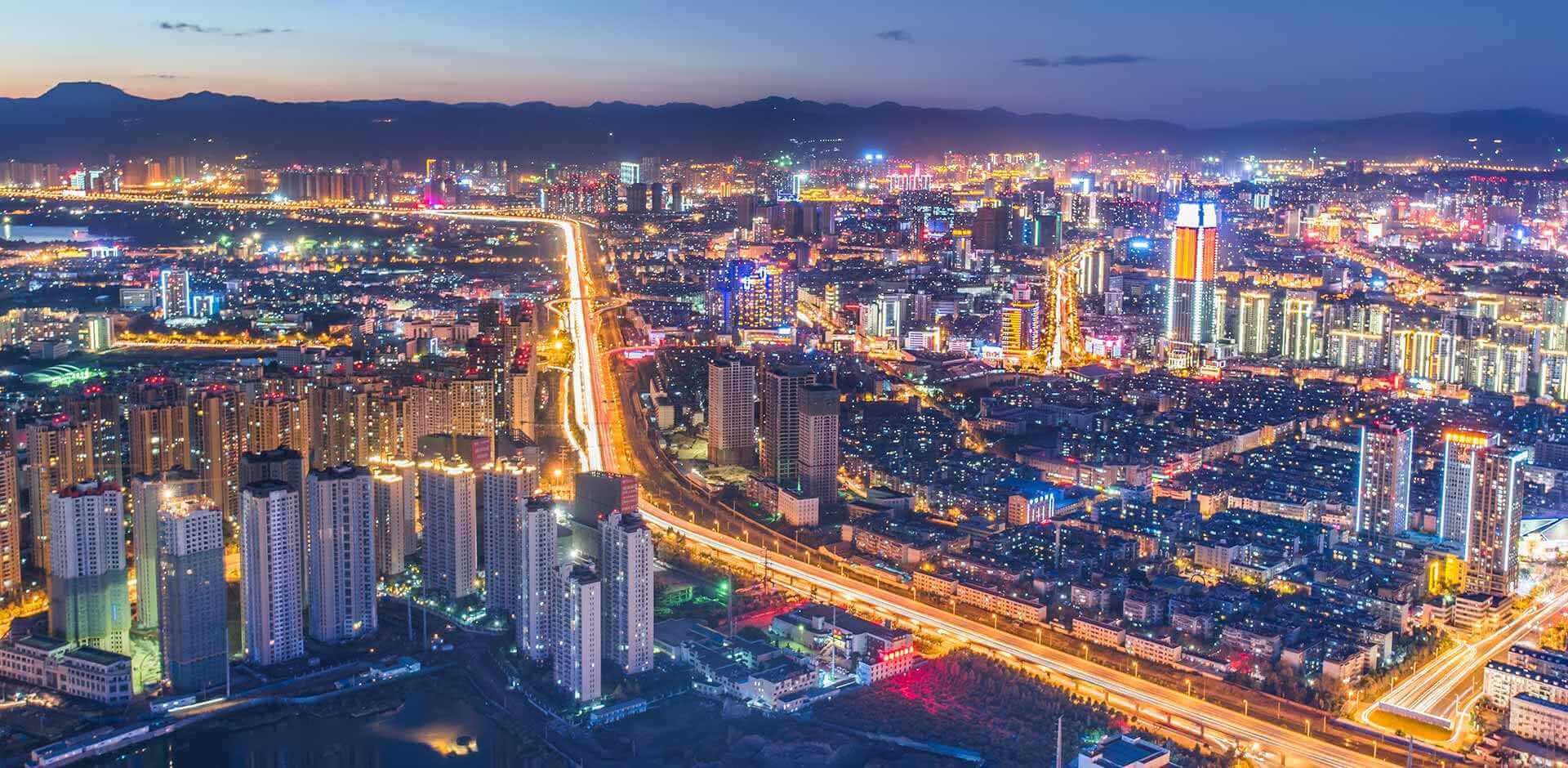
Key Points
- Ideal for: Eco-tourists, history enthusiasts, foodies.
- Best Time to Visit: Spring: March-May, Autumn: September – November
- Best Clothing Items: Day: Breathable layers, Night: Sweater/jacket, Footwear: Comfy shoes
- Popular Places to Eat: 1910 La Gare du Sud for local fare, Crossing the Bridge Noodles, Shipping Hall for tofu
- Top Things to Do: Visit Stone Forest, Sunset at Dian Lake, Shop at Bird and Flower Market, Day trip to Dongchuan Red Land, View from Western Hills
- Things to Remember: Sun protection needed, Modest attire for temples, Hydration is key
How to Reach?
- Nearest Railway Station: Kunming Railway Station, located in the city centre, provides extensive services throughout China. Its central location and high-speed connections to major cities like Beijing, Shanghai, and Chengdu make train travel popular.
- Nearest Airport: Kunming Changshui International Airport, about 25 km from the city centre, is the primary arrival point for air travellers. It offers regular domestic and international flights, and bus and transit services provide effortless city transfers.
- Nearest Bus Station: Kunming East Bus Station offers widespread links to various locations inside Yunnan province and beyond. Centrally located and with regular services, it caters to visitors wanting to explore the field more comfortably.
Tips for Travellers
Oh, heading to China, are you? That’s fantastic! China is an immense country filled with wonders, both ancient and new. Before you embark on this unforgettable journey, let me share some tried and true tips to make your adventure as smooth and enjoyable as possible:
So there you have it, my fellow globe-trotters! With these tips in your travel arsenal, you’re all set for a beautiful adventure in China. Remember to soak in every moment.
Conclusion
Well, that brings us to the end of our virtual journey through the 17 best places to visit in China. From standing atop the iconic Great Wall to witnessing the spectacular Harbin Ice Festival, we’ve travelled far and wide across this stunning country.
Although we’ve covered a lot, remember that every traveller’s experience is unique. So, whether planning your first trip to China or returning for the umpteenth time, always pack an open mind along with your belongings! Indulge in the richness of the local lifestyle, and don’t be surprised if you find yourself falling in love with the country repeatedly.
Before signing off, here’s a little something for you. Do you have any fascinating stories from your adventures in China? Or, a dream destination you’re itching to explore? We’d love to hear about it!
And, if all this talk about China has excited you for your next escapade, why not reach out to a travel advisor? They can help plan a trip that hits all those incredible spots we’ve just covered.
Safe travels, fellow adventurers, and here’s to discovering the mesmerizing charm of China!
Please do visit other interesting posts too:
FAQs
Do I need a special permit to visit the Forbidden City in Beijing?
No special permit is required, but you must buy an entry ticket. Purchasing your tickets in advance is a good idea, especially during the tourist season.
What’s the best time of year to walk the Great Wall of China?
Spring (April–May) and autumn (September–November) are ideal as the weather and scenery are comfortable. Try to avoid Chinese public holidays when they get very crowded.
Is the Terracotta Army in Xi’an accessible to non-Chinese speakers?
Yes, you can join English tours or rent audio guides at the site. Information signs in English are also available.
Can you swim in the Li River in Guilin?
Swimming in the Li River isn’t generally recommended due to safety concerns, but you can enjoy other water activities, such as bamboo rafting.
How can I best experience the Shanghai Skyline?
For the best views, visit the observation decks of skyscrapers like the Shanghai Tower or cruise on the Huangpu River at night.
